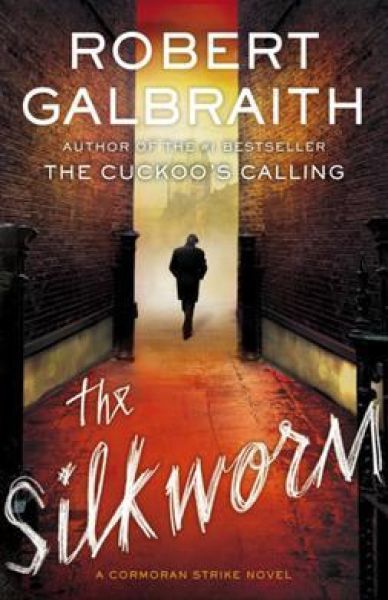The Case of the Libelous Corpse
The Silkworm (Cormoran Strike, volume 2)

5 Nov, 2015
0 comments
2014’s The Silkworm , the second mystery in Robert Galbraith’s Cormoran Strike series, proved to me that sometimes having a legendarily lousy memory can be an asset. Ditto for not looking at author bios immediately.
Catapulted from poverty to fame and fortune by the events of the first book, The Cuckoo’s Calling , Strike discovers that well-to-do clients can often be entitled prats. Annoyed with his latest jerk client, Strike fires the man to take a considerably less remunerative case: locating errant author Owen Quine for Quine’s wife, Leonora Quinn
The question very quickly evolves from “where has Owen got off to this time?” to “Why would anyone want Owen back?” Owen appears to be a collection of character flaws wrapped around more character flaws. A man-child utterly focused on his own needs and desires, an author of little talent and enormous spite, Owen revels in being offensive and grating. He’s certainly not faithful to his wife. To know Owen is to hate him.
When Owen turns up in a derelict building, disemboweled and very, very dead, the problem is not, therefore, working out who wanted him dead, but narrowing the vast crowd of suspects down to only one.
The key to the case appears to be Owen’s last book, a scurrilous work filled with near-libellous caricatures of people in London’s literary world. A copy that circulated before Owen vanished was enough to end professional relationships and to inspire threats of lawsuits. Did it prompt one of Owen’s victims to lure Owen into the fatal ambush?
The police think Leonora is the likely suspect and evidence supports their supposition. Strike, on the other hand, doubts that Leonora is capable of the careful planning the crime demanded; if the evidence implicates Leonora, then it can only be because someone arranged it that way. With a suspect in hand, the cops have no reason to keep investigating, which means if an innocent woman is to be freed and the actual killer caught, Strike will have to solve the case himself.
~oOo~
By the time I got about a quarter of the way through this novel, I was baffled why anyone wanted a review of it. It’s not an awful book, as such, but it is an adequate-at-best assembly of stock mystery tropes: the detective with a troubled past, the asshole victim everyone wants dead, the faithful secretary, and so on. So what makes this book of note?
Now, everyone out there who has a memory longer than a goldfish knows the reason but I didn’t until I flipped to the author bio: Robert Galbraith is a pen name of J. K. Rowling.
Speculative fiction and mystery have long had overlapping populations of writers; the skills used to write one are often transferable to the other. For structural reasons (mystery sales being about a quarter of fiction sales, while speculative fiction is about one twentieth of fiction sales), it generally makes financial sense for spec fic authors to migrate to mystery, where they may be able to dabble in bohemian excesses like living indoors and regular meals that aren’t leftovers scavenged from a dumpster. Rowling probably didn’t have a financial motive here, given that she is that rarest of spec fic writers, ones whose personal fortunes from book sales are larger than the GDP of minor nations. My guess is that, like a lot of people, she just likes mysteries.
The result isn’t terrible but it’s not especially noteworthy. In fact, it is remarkably unremarkable, the kind of book you might buy off an airport spinner rack to read at the beach, but not mind overmuch if you left it back in your hotel room. Rowling is clearly very familiar with the genre and she has a grasp of the necessary elements. Unfortunately, you can see where she hammered the components into place. Or at least I can.
I think part of the problem may be that fantasy (and science fiction) has a pretty high tolerance level for clunky writing; infodumping and repetitious use of stock phrases like “pube-like hair” are tolerable as long as the plot moves along nicely and there are thrilling confrontations. Although there are certainly terrible mysteries out there (ask me about the Pennyfoot Hotel Christmas mysteries!), generally the average mystery is better written than the average spec fic book; writing that is acceptable in spec fic looks a bit amateurish in mystery
Still, this was no worse than a Midsomer Murders episode. I wouldn’t buy it in hardcover, but your local library almost certainly has a copy.
The Silkworm is available from Sphere in the UK and Hachette in the US.
